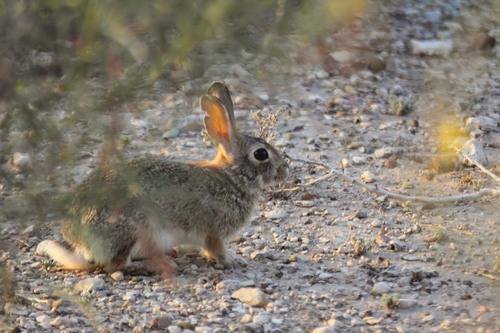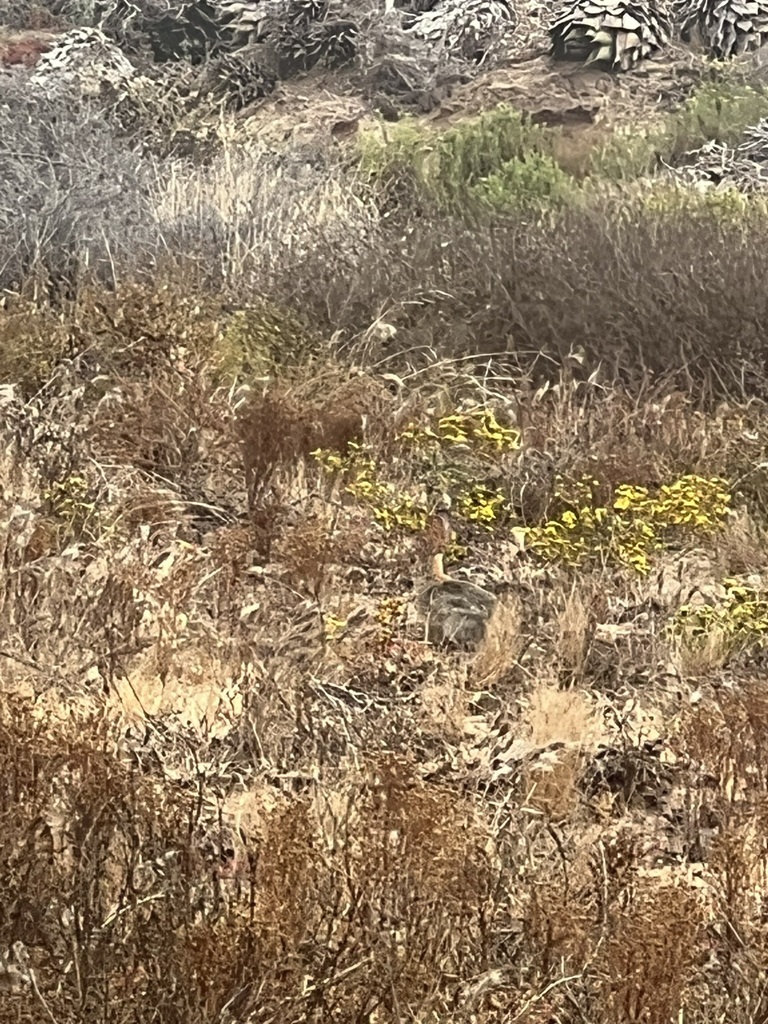|
| Common Animals Fish Mushrooms Flora |
|
Sylvilagus audubonii |
July: Rabbits continue foraging actively, preparing for the fall season.
Safe for humans. May show aggression during rutting season. Used in Native American and Mexican cuisine of U.S. Southwest. Considered "survival meat" in the desert. Hunting is part of traditional rancher and tribal lifestyle.
Inhabits arid zones — deserts, scrublands, cactus thickets. Feeds on grasses, leaves, bark. Most visible at dawn or dusk.
Spot-and-stalk near bushes and cacti at dawn Hunting with bow or small-caliber rifle (.22LR) Ambush near water sources
Crepuscular and nocturnal behavior. Sensitive to sound — move silently. Often circles back after being spooked.
Thin skin — easy to remove, gloves recommended in heat. Remove entrails within 30–60 minutes. Very lean meat — marinate before cooking. Meat is safe when properly cooked. Possible parasites if eaten raw.
Hind legs: Braising, frying
Whole carcass: Roasting, BBQ
Whole carcass: Roasting, BBQ
Chili-braised rabbit with beans (Braising)
Mexican-style spicy and hearty meal
Mexican-style spicy and hearty meal
1. Brown rabbit pieces with onion and garlic.
2. Add red beans, green chili, tomatoes.
3. Simmer for 1.5 hours, serve with corn tortillas.
2. Add red beans, green chili, tomatoes.
3. Simmer for 1.5 hours, serve with corn tortillas.
Rabbit in cactus (nopales) stew (Braising)
Traditional Southwest Native American dish
Traditional Southwest Native American dish
1. Sear meat, add cooked cactus pads (nopales).
2. Season with cilantro, onion, jalapeño.
3. Simmer for 1 hour.
2. Season with cilantro, onion, jalapeño.
3. Simmer for 1 hour.
Prairie-style dried rabbit (Drying)
Field method for preserving meat without refrigeration
Field method for preserving meat without refrigeration
1. Slice meat into strips, marinate with salt, pepper, lemon juice.
2. Hang in sun or over smoke for 12–24 hours.
3. Store dry in cloth bag.
2. Hang in sun or over smoke for 12–24 hours.
3. Store dry in cloth bag.
 México · Baja California · Ensenada
México · Baja California · Ensenada








